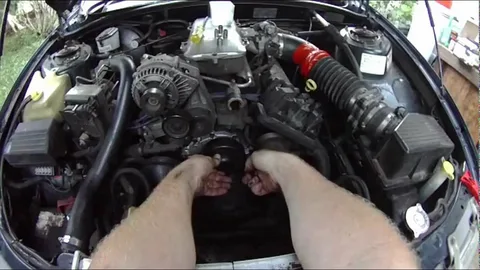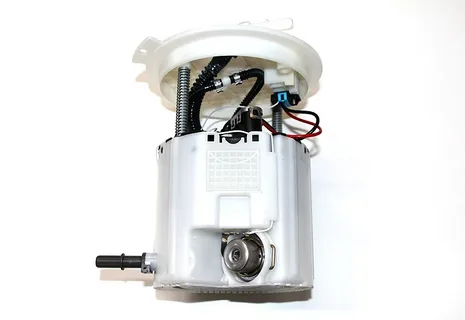When it comes to performance, every detail matters in your VE Commodore. One crucial component that often flies under the radar is the fuel pump. This unsung hero ensures your engine gets all the fuel it needs for optimal operation. Maximising your VE Commodore fuel pump can make all the difference if you aim for a smoother drive and enhanced horsepower. In this guide, we’ll dive deep into everything you need to know about enhancing performance through proper care and knowledge of the VE-Commodore fuel pump system. Whether you’re experiencing issues or just looking to boost efficiency, we’ve got you covered! Let’s hit the road towards better performance together!
Understanding the VE-Commodore Fuel Pump System
The VE-Commodore Fuel Pump System is critical in ensuring optimal vehicle performance. This system is composed of an electric pump situated inside the fuel tank. Its primary function is to draw gasoline through the filter and deliver it to the engine at a consistent and optimal pressure. Carefully maintaining this pressure is indispensable; insufficient pressure may result in sluggish acceleration, while excessive pressure can lead to system damage.
The system also incorporates a range of sensors that monitor fuel levels and facilitate efficient fuel delivery. These sensors work with the Engine Control Unit (ECU) to adjust the fuel flow in response to varying driving conditions. By comprehending the intricacies of this system and its operations, you can proactively identify potential issues. Early recognition of warning signs such as sputtering or decreased acceleration can save time and expenses on future repairs.
How do you diagnose VE-Commodore Fuel Pump issues?
When diagnosing issues with your VE-Commodore Fuel Pump, paying close attention to various indicators is essential. Start by listening for any unusual noises from the fuel tank, such as a whining or buzzing sound, which can indicate a failing pump. Next, closely monitor your engine’s performance. If you notice stalling, hesitation during acceleration, or difficulty starting, these symptoms could point to potential fuel delivery problems.
Check the dashboard for any warning lights related to the engine or fuel system. These alerts can help you identify specific faults in the pumping mechanism. Another essential aspect to consider is the fuel pressure. You can use a gauge to measure the pressure, and low readings may suggest the need for further investigation into the pump’s functionality.
Inspecting the fuel filters and lines for clogs or leaks that might affect the overall performance is crucial. Ensuring a clean and unobstructed fuel flow is vital before concluding that the fuel pump is solely at fault. These detailed steps will help you thoroughly assess and diagnose potential VE-Commodore Fuel Pump issues.
 VE-Commodore Fuel Pump Replacement Guide
VE-Commodore Fuel Pump Replacement Guide
It’s natural to feel overwhelmed when replacing the fuel pump in your VE Commodore. However, with the proper guidance, this task can be manageable. Start by gathering the essential tools you’ll need for the job, including a socket set, screwdrivers, and safety gloves. Before you begin, ensure your vehicle is parked on level ground, and the ignition is turned off. To relieve the fuel pressure, you’ll need to locate and remove the fuse for the fuel pump. After doing so, start the engine and let it run until it stalls. This step is crucial for minimizing spills during the removal process.
Once the pressure has been relieved, you can access the fuel tank. Depending on your vehicle’s model year, this may involve unbolting brackets or lowering protective shields. Take the time to carefully disconnect any wiring harnesses attached to the pump assembly. After exposing the fuel pump, you can remove the clamps holding the hoses in place. Once the clamps are removed, detach the hoses from the old pump. Now, you’re ready to install the new fuel pump. Follow the reverse steps to securely attach the hoses, reconnect any wiring harnesses, and ensure all connections are tight to prevent leaks.
Preventative Maintenance Tips for VE-Commodore Fuel Pumps
Preventative maintenance for your VE-Commodore Fuel Pump can extend its lifespan significantly. Here are a few tips to help keep your fuel pump in good working condition:
Use quality fuel
It’s essential to use high-quality fuel in your VE Commodore. Low-quality or contaminated fuel can clog the fuel filter and put extra strain on the fuel pump, potentially causing it to fail prematurely.
Replace the fuel filter regularly.
The fuel filter removes impurities or debris from the fuel before it reaches the engine. Over time, these particles can build up and clog the filter, reducing fuel flow to the engine. Replace your VE Commodore’s fuel filter, as your owner’s manual recommends every 30,000 miles.
Keep your gas tank at least a quarter full.
Running your car on a near-empty tank can cause the fuel pump to work harder than necessary, as it has to pull gasoline from further down in the tank where sediment and other contaminants may have settled.
Avoid rapid acceleration and hard braking.
These driving habits can cause unnecessary strain on your vehicle’s components, including the fuel pump. Try to accelerate and brake smoothly to reduce car parts wear.
Inspect and clean electrical connections.
Over time, dirt and corrosion can build up on the electrical connections to the fuel pump, causing it to malfunction. Periodically inspect and clean these connections to ensure proper operation.
By following these tips, you can help prolong the life of your VE Commodore’s fuel pump and avoid costly repairs down the road. However, if you experience any fuel pump issues, it’s essential to have it checked and repaired by a qualified mechanic as soon as possible.
Choosing the Right VE Commodore Fuel Pump for Your Vehicle
When selecting the right VE Commodore Fuel Pump, several important considerations must be made.
- Ensuring that the fuel pump you choose is compatible with your vehicle’s specific model and engine type is crucial. This compatibility is essential for ensuring optimal performance and avoiding potential future issues.
- You must choose an OEM (original equipment manufacturer) fuel pump or an aftermarket option. OEM pumps are designed to fit perfectly and are built to the vehicle’s original specifications. While they may be pricier than aftermarket pumps, they offer the assurance of precise fit and adherence to quality standards.
- It is crucial to consider the fuel pump’s flow rate and pressure specifications. These specifications directly impact the engine’s efficiency and performance. A fuel pump that meets or exceeds factory flow rate and pressure standards can significantly enhance the vehicle’s overall performance.
- It is wise to look for warranties or guarantees when purchasing. Having the protection of a warranty can provide peace of mind and safeguard your investment against any potential defects or failures that may arise down the line.
How to Extend the Life of Your VE-Commodore Fuel Pump?
To ensure your VE-Commodore Fuel Pump lasts for years to come, it’s crucial to engage in regular maintenance. Begin by meticulously keeping your fuel system free from any contaminants. The presence of dirty fuel can lead to accelerated wear and tear. Additionally, per the recommended schedule, keeping a close eye on your fuel filter is essential, preventing debris from reaching the pump. Opting for high-quality fuels from reputable brands that offer cleaner burning options can also play a significant role in prolonging the life of your fuel pump.
Monitoring the electrical connections is essential. Ensure they are tightly secured and corrosion-free to ensure optimal performance. Furthermore, it’s advisable to avoid frequently running low on fuel, as this can cause overheating and put unnecessary strain on the pump. Keeping a consistent fuel level helps protect against any potential damage over time. By following these straightforward yet essential steps, you can significantly enhance the lifespan of your VE-Commodore Fuel Pump, all while enjoying a smoother engine performance.
Cost of Replacing a VE-Commodore Fuel Pump
Replacing the fuel pump in a VE Commodore can involve varying costs depending on several factors. The average cost for parts and labor combined typically ranges from $300 to $800. The fuel pump price can vary from $150 to $400, depending on whether you opt for an OEM part or an aftermarket option. OEM parts generally come with a higher price tag. Additionally, labor charges can range from $100 to $400, depending on the service provider.
It’s essential to remember that during the replacement process. During the replacement process. Budgeting extra funds for potential issues such as clogged filters or damaged lines is advisable. When facing a fuel pump replacement, obtaining quotes from different mechanics and conducting thorough research on parts before making a final decision is recommended. This approach will help ensure that you get the best value for your investment while maintaining the efficient performance of your vehicle.
Aftermarket vs OEM VE-Commodore Fuel Pumps: Pros and Cons
When choosing a VE-Commodore Fuel Pump, you’ll often find yourself weighing the benefits of aftermarket options against OEM products. Aftermarket fuel pumps can be appealing due to their lower price points. Many brands offer enhanced performance features and better flow rates, which might cater to those looking for more power or efficiency from their vehicle. However, quality can vary significantly within the aftermarket segment.
Not all parts are created equal, and some may not meet the same standards as original equipment manufacturer (OEM) components. On the other hand, OEM fuel pumps provide peace of mind with guaranteed compatibility and reliability. They’re designed specifically for your vehicle model, ensuring optimal performance under various conditions. The downside? They typically come with a higher price tag compared to many aftermarket alternatives. Weighing these factors is essential in making an informed choice that fits your driving needs and budget constraints.
Conclusion
The VE Commodore fuel pump is crucial to your vehicle’s performance. Understanding its function and maintenance can significantly enhance efficiency. Regular checks and timely replacements can save you from unexpected breakdowns. It’s essential to stay proactive about potential issues. Choosing the right pump, whether OEM or aftermarket, affects your driving experience significantly. Each option comes with its own set of advantages and disadvantages. Pay attention to how your car performs daily. Subtle changes could indicate underlying problems with the fuel pump system.
FAQs
Here are some common questions regarding the VE-Commodore Fuel Pump:
What symptoms indicate a failing VE Commodore Fuel Pump?
Common signs include difficulty starting the engine, stalling while driving, decreased fuel efficiency, or unusual noises coming from the tank.
How often should I replace my VE-Commodore Fuel Pump?
AA well-maintained fuel pump typically lasts anywhere from 80,000 to 100,000 kilometers. However, it’s essential to monitor your vehicle’s performance regularly.
Can I install an aftermarket VE-Commodore Fuel Pump myself?
While someone with mechanical skills can do this themselves, professional installation is recommended for optimal results and safety.
| Other Good Articles to Read |
| Blogs-Peoples |
| Bryan Smith Blogs |
| intellect blogs |
| the fault in our blogs |
| blogs eu |
| oz forums |
| recruitment blogs |
| zet blogs |
| id blogs |
| Blog Studio legale |
| blogs map |
| Related Business Listings |
| Contact Directory |
| Local Business Profiles |

